The lead image explains the methodology.
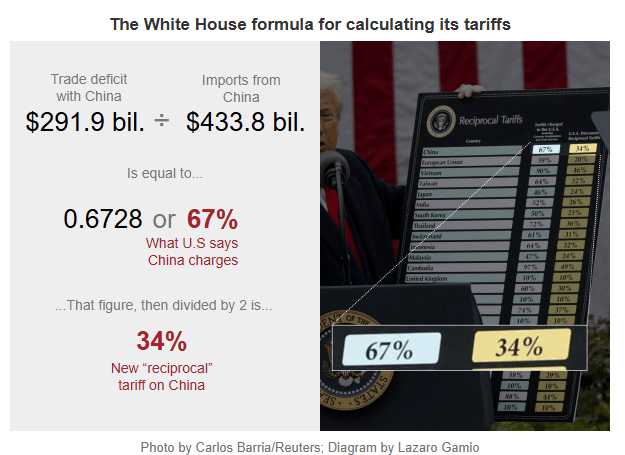
Understanding the Formula
The New York Times explains How Trump’s Tariff Rates Are Calculated.
In an earlier briefing with reporters, White House officials said the figures were calculated by the Council of Economic Advisers using well-established methodologies. The official added the model was based on the concept that the trade deficit that we have with any given country is the sum of all the unfair trade practices and “cheating” that country has done.
The White House later clarified its methodology in this post. Though it uses some mathematical symbols that might be hard to parse, it confirms that the formula is essentially based on the U.S. trade deficit with a foreign country, divided by the country’s exports.
Reciprocal Tariff Calculations
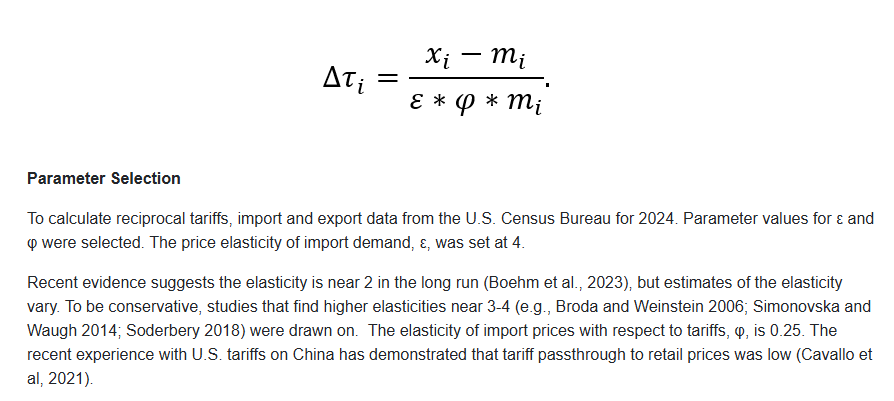
The Office of the US Trade Representative explains Reciprocal Tariff Calculations
Introduction
To conceptualize reciprocal tariffs, the tariff rates that would drive bilateral trade deficits to zero were computed. While models of international trade generally assume that trade will balance itself over time, the United States has run persistent current account deficits for five decades, indicating that the core premise of most trade models is incorrect.
The failure of trade deficits to balance has many causes, with tariff and non-tariff economic fundamentals as major contributors. Regulatory barriers to American products, environmental reviews, differences in consumption tax rates, compliance hurdles and costs, currency manipulation and undervaluation all serve to deter American goods and keep trade balances distorted. As a result, U.S. consumer demand has been siphoned out of the U.S. economy into the global economy, leading to the closure of more than 90,000 American factories since 1997, and a decline in our manufacturing workforce of more than 6.6 million jobs, more than a third from its peak.
While individually computing the trade deficit effects of tens of thousands of tariff, regulatory, tax and other policies in each country is complex, if not impossible, their combined effects can be proxied by computing the tariff level consistent with driving bilateral trade deficits to zero. If trade deficits are persistent because of tariff and non-tariff policies and fundamentals, then the tariff rate consistent with offsetting these policies and fundamentals is reciprocal and fair.
Findings
The reciprocal tariffs were left-censored at zero. Higher minimum rates might be necessary to limit heterogeneity in rates and reduce transshipment. Tariff rates range from 0 to 99 percent. The unweighted average across deficit countries is 50 percent, and the unweighted average across the entire globe is 20 percent. Weighted by imports, the average across deficit countries is 45 percent, and the average across the entire globe is 41 percent. Standard deviations range from 20.5 to 31.8 percentage points.
Country Specific Tariffs
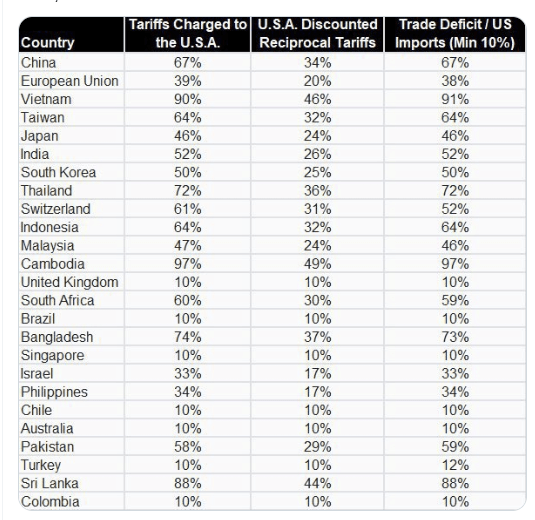
The weighted average of tariffs is a whopping 41 percent.
Largest Peacetime Tax Hike in History
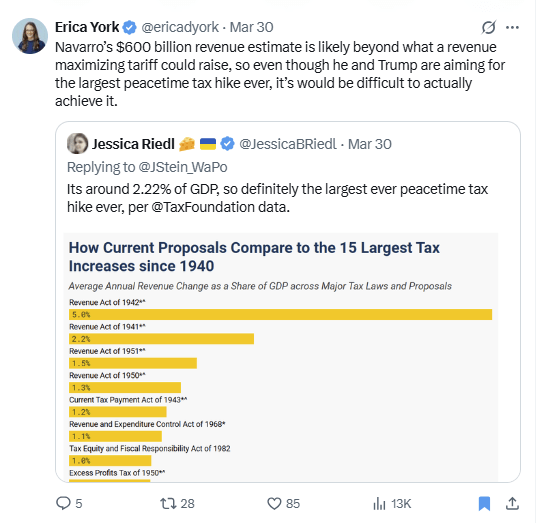
Pure Malarkey

Fake Numbers
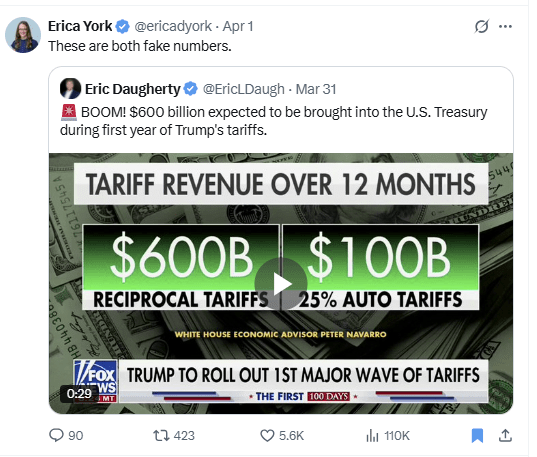
Here’s a link to the Fake Numbers Video.
Erica York comments “A consumption tax can lead to increases in the general price level in the economy or to reductions in nominal wages and profit rates. For wage earners, the distinction is unimportant, because they face the same reduction in buying power whether their nominal wage falls or the prices they face increase.”
Related Posts
April 1, 2025: Excluding Oil, the US Has a Trade Surplus with Canada Every Year Since 2008
Let’s do a fact check on Trump’s Canada claims.
March 22, 2025: Should the US Import Oil from Venezuela Instead of Canada?
The answer to this question is seemingly obvious, but ….
But “Trump Considers Extending Chevron License to Pump Oil in Venezuela”
I sarcastically commented “This makes perfect sense because Venezuela is a much better neighbor than Canada.”
March 24, 2025: Trump Announces 25 Percent Tariffs on Countries that Buy Venezuela Oil
I eagerly await Trump’s major announcement for Venezuela to be the 53rd state.
Q: Since a total halt of Canadian oil would eliminate the US trade deficit with Canada, should we stop importing Canadian oil, then eliminate all tariffs on Canada?
A: Don’t be silly. To do that Canada needs to become the 51st state.
Cheese Was a “Key Achievement” of Trump’s USMCA Trade Agreement
In case you missed it, please note Cheese Was a “Key Achievement” of Trump’s USMCA Trade Agreement
Trump is complaining about Canada’s cheese tariffs. In 2018, he was bragging about cheese.